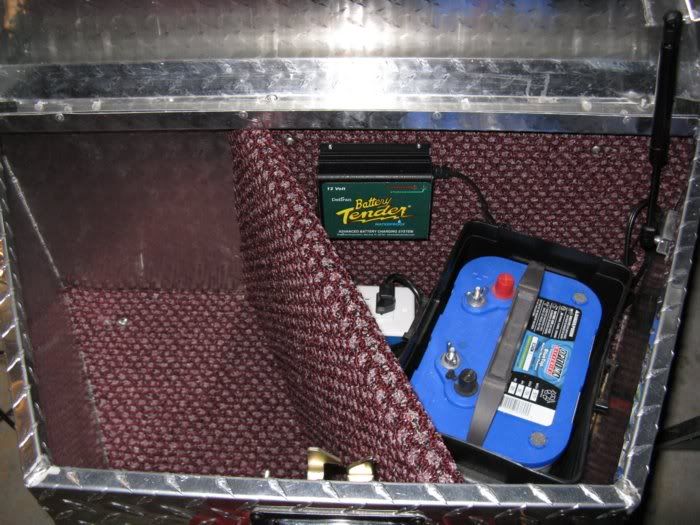dh asks...
Battery tender or 12V converter/charger...
Which did you use, and why.
I see a lot of both, but can't seem to find what the benifits of one over the other are.
http://batterytender.com/resources/selection-guide.htm
What type of battery will be recharged?
Flooded, Sealed, VRLA, AGM, GEL, etc.
How large is the battery?
This is the capacity in amp hours. Some batteries will not have this number displayed on their label. Typical labels will show either CCA (Cold Cranking Amps) or Reserve Capacity in Minutes. Reserve capacity is the number of minutes that the battery can deliver a constant 25 amps to a load.
How is the battery being used?
What is the application? SLI, Deep Cycle, or Standby Power.
How deeply will the battery be discharged?
Shallow cycling (discharging 20% to 50% of the battery’s capacity) does not usually require as much recharge power as deep cycling (discharging more than 50% of the battery’s capacity).
How often will the battery be discharged?
In general, the more often the battery is discharged, the higher the power you want to use to recharge it. This is particularly important if the battery is deeply discharged. A good rule of thumb for deep cycle batteries is to only discharge them once every 24 hours, otherwise there may not be sufficient time for the batteries to recover between discharges. This has been a serious point of concern for many industrial applications. It has also been a great disappointment to many consumers who have expected to be able to repeatedly discharge large deep cycle batteries and then recharge them with low power chargers.
How much time is available to recharge the battery before it has to be discharged again?
This question is where many industrial systems designers get into trouble. Industrial battery use is usually the most demanding, particularly with electric vehicles that require a mixture of high and moderate rate deep discharges. Time must be allotted not only to recharge the battery, but also to let it rest in a fully charged state between deep, high rate discharges. If you need to replace 100 amp hours in 4 hours, then you need at least 25 amps. However, the truth is that you will need 30 to 40 amps or more and probably 6 to 8 hours because of the way that chargers and batteries behave after the battery is 80% recharged. It is more difficult, and it takes a lot longer to replenish the last 20% of the battery charge than it does to replenish the first 80% of the battery charge. Even if you can get the battery completely recharged in 6 to 8 hours from a deep discharge, it is still not wise to deeply discharge a lead acid battery more than once a day.

It's a question of amperage. Where a Battery Minder is useful for maintaing peak charge while the battery is not being used, i.e. your tear is stored, a Minder won't be able to supply the raw amperage needed to recharge the battery after a busy evening in camp where lights are going, a dvd is being watched on the laptop which is plugged in to an inverter and the vent fan has been running... and will be most of the night.
A 12V converter/charger is needed when the battery has been discharged from use.
A battery Minder (tender) should be used when the camper is waiting for it's next outing. A tender used as the sole source of charge current for a deep cycle battery will work... for awhile. But it won't have the ability to peak the battery, only maintain a "float" charge after a peak has been given via some amperage (from a larger unit). A float charge can and will prolong the life of the battery, too, but, again, it won't provide the grunt to recharge a battery after heavy use.
We really need both installed in our teardrop's 12V electrical system.






 Mark (& Cindi)
Mark (& Cindi) 





